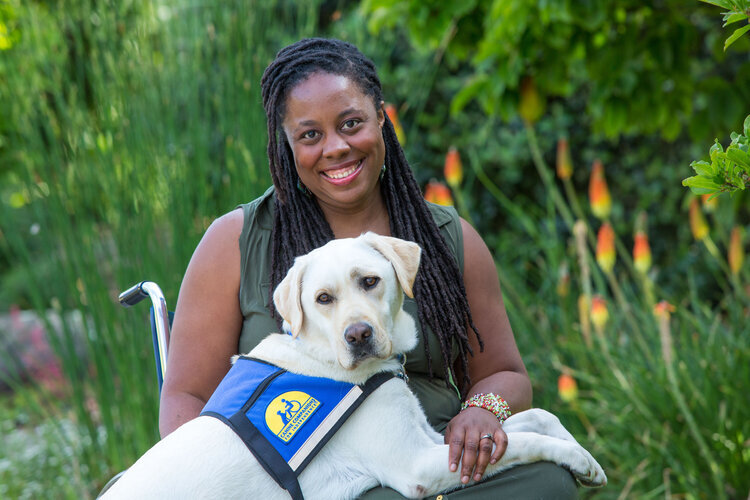The frenzy of our activism neutralizes our work for peace. It destroys our own inner capacity for peace. It destroys the fruitfulness of our own work, because it kills the root of inner wisdom which makes work fruitful.
~ Thomas Merton, Conjectures of a Guilty Bystander
In relationships, there’s the phrase, “Get you somebody that can do both”:
Get you somebody that can do both 😉 pic.twitter.com/8HVlEQkXKC
— Morolake Akinosun™ (@MsFastTwitch) November 23, 2016
This dynamic isn’t just valuable in relationships; there is also a comparable need in nonprofit social justice organizations. In the institutions that are home to today’s freedom fighters, those with the skills to manage staff must also have the passion to drive movements.
To be clear, there is a difference between a movement leader for social justice, and a social justice nonprofit manager working in an organization. The movement is the values and framework that guide and inform how we attain social justice, while management deals in personnel, systems, and organizational growth
Can you have one and the same? Absolutely! As is the case with all worthwhile things, however, it takes work.
I’ll use myself as an example: when I began my work as a leader in the Reproductive Justice movement, I organized a grassroots reproductive justice coalition in New York City. Without any funding, the coalition became a creative space for women of color leaders to articulate our needs, and prototype our wishes and desires for liberation.
Not having funding allowed us to operate without the constraints that can impose, but it also meant I received no salary and needed to supplement my living expenses with consulting work. Between my work with the coalition and as a consultant, learning how to balance my emotional health was crucial.
Today, as Deputy Director for New Voices for Reproductive Justice, I support my staff by setting aside time to make sure I stay engaged with them beyond our work together. This takes more time out of my already maxed-out schedule, yes, but I know how critical it is to build relationships based on mutual respect. Focusing on these relationships both honors the hierarchy that is necessary for our organizations to operate effectively, and builds the trust with my staff that inspires them to show up at their best in our important work.
Cultivating these relationships also requires me to tap into those skills I gained as an organizer for balancing my emotional health. In order for me to manage my schedule, make time for my staff, and keep my energy sustained for the work of supporting the broader Reproductive Justice movement, I need to be gentle with myself. If I’m not, I could lose both my passion and my ability to engage with my staff, leaving all of us unable to do the important work of outreach, base building, direct action, and community organizing.
This is why the dynamic of multiple hats in work and community spaces is more than just semantics; it’s how I live my life.
After thinking about this idea a lot, I began to wonder what practices and resources my comrades were using to help themselves and their staff avoid burnout.
I interviewed five social justice movement leaders who are also nonprofit managers, and asked how they navigate the dynamics of their work, and what they think is needed to “be somebody that can do both”. Here are the lessons they shared:
Alicia Walters:
Building a community of people in the same boat and troubleshooting with them is the best way to learn how to navigate these conversations and normalize management experiences. Also, I find at Forward Together, we use nonviolent communication. It’s a four-step process: naming the observable behavior, stating your interpretation of what happened, stating the impact, and stating your request for the other person’s behavior in the future or how you’d like things to be resolved. So many times, I get in my head about something. This gives me a template to manage conflict. It’s important to have that conversation right away using this structure.
Brenda Barron
Organizational development is critical. The organization must have a strategic plan and set direction so that there aren’t challenges in organizing in the field. You also have to bring people together even when you’re not physically together. You can do this by making sure there are structured times for the team to meet with each other, especially if you have remote staff. As a manager, it’s important to meet the staff’s needs through development and encouragement.
Pamela Merritt:
The number one tool is communication. Having … a structured/firm weekly check-in to communicate where you’re at, and how you’re feeling.
Having different communication outlets (text/email/phone/Slack). Regular touches help maintain who’s making the decisions where.
Giving people opportunities to be creative within the capacity of their role so they don’t seek those creative outlets outside their role. You recruit talented people so they can share their talent.
Finding out where someone’s motivation is – what brought them into this work, why they show up every day – so you have a good idea of what someone is trying to get out of their job. It goes a long way to figure out how to keep them happy in the job, avoid roadblocks, and maximize their potential.
To manage the stress, taking regular walks both as an employee and a manager has served me well so I’m not acting in the heat of the moment. It gives you the opportunity to get energy and adrenaline out so that you can settle your thoughts on an issue. Something may seem chaotic; a walk will give you the opportunity to let the chaos settle.
Steph Herold:
There needs to be more of an investment in treating staff well, and teaching people how to manage others. As a job seeker, it’s really a problem on so many levels. At one place I interviewed, the managers are all white, the staff are mostly people of color, and the organization doesn’t address it. There are power dynamics between managers and their employees in social justice organizations where managers struggle with how to give feedback. There is an obsession with leadership in social justice movements. There has to be a balance for holding empathy for managers while they build their leadership with understanding how to make a cohesive team.
Nia Martin-Robinson:
The best thing I did for myself was organizing a monthly meeting of managers of color who work for mainstream (white-led) organizations. We talked about what was up in our lives, and how we navigate being the only person of color on our whole team. Mainly, we talked about what it feels like to manage white staff, and be in positions where your credibility is constantly questioned. Self-care is not rhetoric; it’s real, and it has to be intentional. It seems to be even harder today from the results of the election. Taking care of ourselves, reaching out, and reading this article are all going to be key things. Also, making sure we are using each other as a resource and not suffering in silence.
Through this generative and generous process, I arrived at this: in order to be somebody that can do both, the first thing you have to do for yourself is know what you need.
It’s easy to forget that, as directors, managers, and executive directors, we steer the mighty ships of our social justice organizations and movements. Though sometimes the amount of work and rigor we put into it looks superhuman – and many times feels superhuman for us – we are all just plain ole human beings who need a little tenderness and understanding, too.
Be gentle with yourselves, managers. If nothing else, we each have the power to do that.

